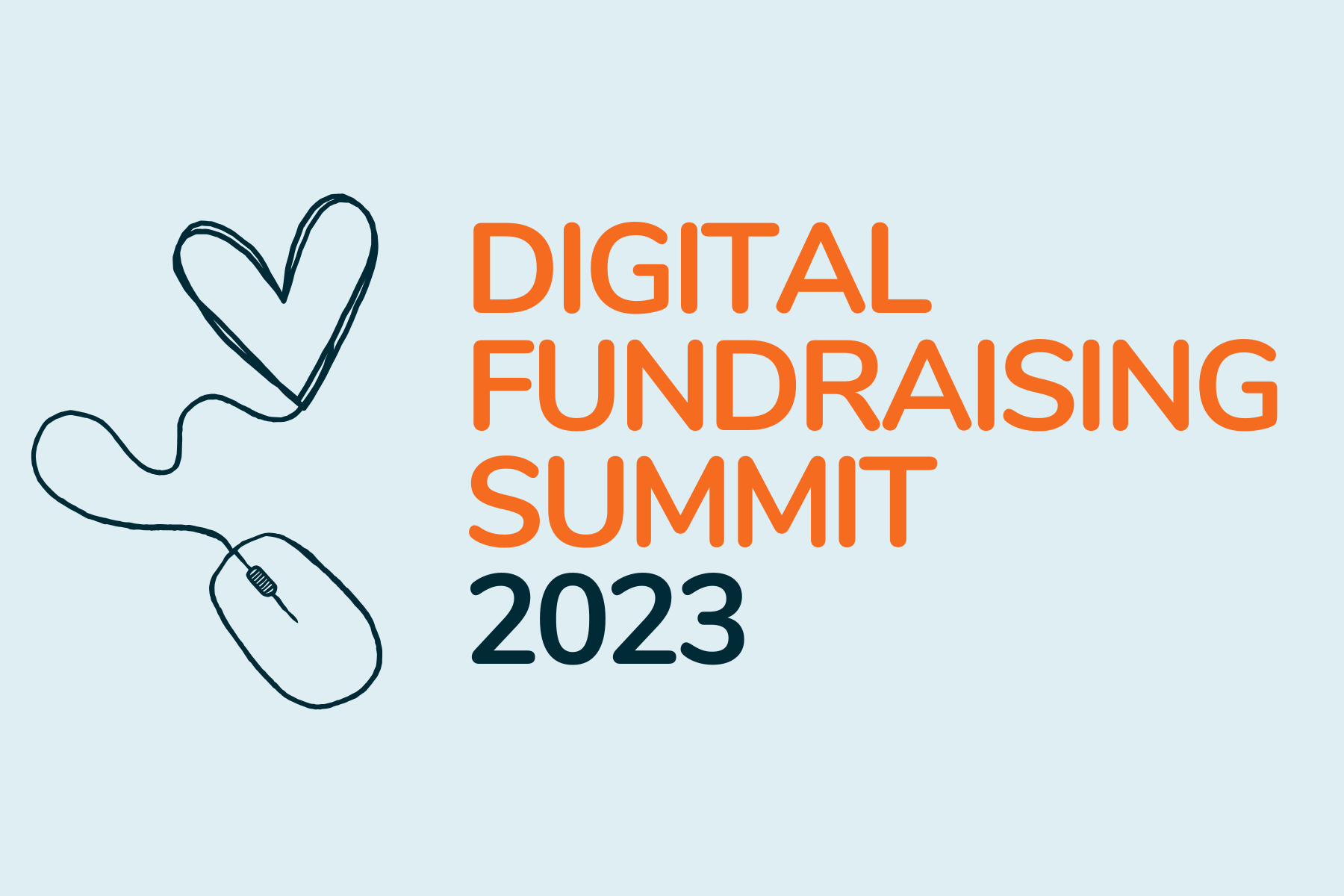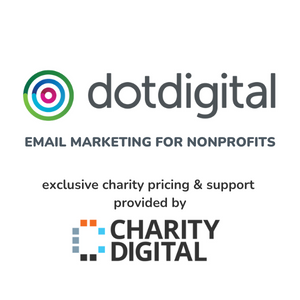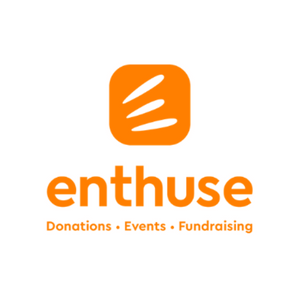Insights
INSIGHTS
All Topics
How to throw a fundraising event
02 Jan 2024by Josie Sparling
We provide the ultimate guide to putting on a spectacular fundraising event, from the planning and organising stages all the way through to delivery and what to do once it’s over
The rumours are true: throwing a fundraising event takes a lot of work. But many charities think it’s worth it to connect with supporters and generate funds for a worthy cause. Done well, fundraising events can be a win-win, with money being raised for a charitable purpose while supporters engage in something fun or meaningful to them. This could be anything from a fun run to dog grooming, virtual karaoke, or even a treasure hunt. The sky’s the limit!
For event organisers, it is important to consider things like the budget, logistics, health and safety, and how you will manage all the people involved in throwing the event. To help you on your way, we have built upon our on-demand webinar “How to organise an event” to outline the steps fundraisers need to take to throw a successful fundraising event.
Skip to: Clarify the fundraising event’s purpose and scale
Skip to: Set specific and measurable targets for the fundraising event
Skip to: Communicate with everyone who should know about the fundraising event
Skip to: Work out your financials for the fundraising event
Skip to: Plan the running order and logistics of the fundraising event
Skip to: Plan your timeline for organising the fundraising event
Skip to: Market and promote the fundraising event
Skip to: Resource the fundraising event
Skip to: Organise and manage registration for the fundraising event
Skip to: Organise health and safety for the fundraising event
Skip to: Manage stakeholders involved in the fundraising event
Skip to: Make final preparations for the fundraising event
Skip to: Deliver the fundraising event!
Skip to: Evaluate the success of the fundraising event
Skip to: Thank all involved in the fundraising event
Clarify the fundraising event’s purpose and scale
First things first, you need to be clear about why you are organising the event and what you are hoping to achieve. Maybe the purpose of the event is to raise funds, attract new donors, or thank existing donors – or it could be for a combination of these reasons. Making sure you have clarified the purpose and goals of the event will streamline planning and enable you to know how the event measures up.
To understand best fundraising practice, familiarise yourself with the Fundraising Regulator’s Code of Fundraising Practice. This supports legal, open, honest, and respectful fundraising.
Decide on the target demographic for the fundraising event
With all this in mind, you might also want to clarify the demographics that your event is intending to have in attendance. Your target demogaphics might include, for example, the general public, young people, retirees, or local business leaders. Be aware of the donor behaviour of your target group when setting goals and deciding on the details of the event.
For example, it’s worth noting that although in 2023 Gen Z are found to be much more interested in distance events than other age groups, more than one in five in this age range say that the fact none of their friends run, cycle, or swim is a barrier to taking part. Learning from this, charities intending to put on distance events for this demographic could either change the type of event, think of ways to make it more accessible to non-runners, non-swimmers, and non-cyclists, or advertise the event as a great way to meet new friends with similar interests.
Set specific and measurable targets for the fundraising event
Now you know your general goals for the event, set specific and measurable targets. For example, how many registrations are you aiming for? And how many actual attendees are you aiming for? Remember there will be some drop-outs between the number of people who register and the number who actually attend.
You can also set a target for the funds you would like to raise and how many of the participants will be new donors. Make sure to give a specific number or proportion so you can easily measure success against these later – and be sure to make targets realistic based on previous experience in the charity, or benchmarking against similar charities. You should also be sure to track your progress in meeting the objectives throughout the process.
When setting goals for the number of attendees, bear in mind factors such as transport links to the site, the capacity of the venue or site, and the time, date, and day of the week that the event is going to take place on. Try to avoid clashes with similar events taking place nearby.
It is also a good idea to bear in mind the skills and experience of your team when setting targets and assigning roles. This will enable the event to go to plan and reduce stress for all involved on the day.
Communicate with everyone who should know about the fundraising event
Communicate your objectives with the relevant internal teams from the beginning to ensure that everyone in the charity is on the same page and building towards the same clear goals.
If it is a larger fundraising event, the U.K. government recommends letting relevant local authorities know, such as the local council, police, and emergency services. They state, “This can stop an individual or an organising group from making mistakes that may be expensive.”
For larger events they also recommend considering the impact of the event on the local neighbourhood, making sure that residents and businesses know what is going to happen, and giving them the opportunity to feedback any concerns.
It might be best to notify external parties once you have a clear image of what the potential impact of your event will be upon them.
Work out your financials for the fundraising event
Ask if the charity’s leadership team has set a budget for the event. Then consider income and expenditure to make sure your event falls within budget.
Expenditure might include the venue, catering, equipment hire, courier costs, staff travel and accommodation, registration, promotion, insurance, and fees for licences and permissions. Income might include ticket sales, fundraising total, and sponsorship opportunities.
When estimating your event incomings and outgoings, be as accurate as possible to make sure you don’t run out of money or go over-budget. It is a good idea to plan to come in under-budget, to leave some leeway for unexpected expenses.
As making these estimations can be a time-intensive process, make sure to leave enough time.
Plan the running order and logistics of the fundraising event
Agree with the management team what date the event will be occurring on, making sure to leave more than enough time for all of the organising that needs to happen in advance. Then, you can start planning what will happen at the event, when, and how. Some elements of this will become clearer as planning progresses but you can start by thinking about the essential elements of the event.
For example, what time will participants check in to let you know they are in attendance? What time will the main activities start and end for participants? How long will it take you to set up and clear away before and after the event? You can then start building out what needs to happen behind the scenes and who needs to be involved.
That will lead to logistical questions such as: how will equipment, staff, and volunteers get to and from the venue? How can I make the event accessible to everyone? Who is responsible for handling and managing money on the day? Will we need a lot of change? Will there be any periods of waiting around for attendees that need to be filled? Do we need any licences or other permissions to follow the event’s plans? Do we need to close a road? What types of payments will we accept? If hybrid or virtual, what live streaming platform will we use?
Think about what could go wrong and decide what steps will be taken to resolve these issues if they do occur. Also be sure make use of specialist guidance for the particular type of event you are throwing – for example if they involve street parties, firework displays, or running races.
While planning, bear in mind the wellbeing of your team. If it is a day-long event, for example, make sure that your internal team and volunteers will all have time to eat and have a break during the day (including yourself!).
It is important to factor in time to set up the event before it officially starts. This could include putting up signs, decoration and branding, tables and chairs, and audio-visual equipment.
Finally, make sure you include a plan for clearing up after the event. Venues will state on their hire agreements what they expect you to clear up. If your event is in an outdoor space like a public park, plan time to clear up after any litter to make sure you leave the location in as good a condition as how you found it.
Make it as easy as possible to donate
Making it easy to donate could mean using a combination of channels, from contactless payments and QR codes to cash. If you’re hosting a hybrid or virtual event, maybe it means using donation buttons on your platform of choice – or taking advantage of text to donate services.
Think about who will be donating to you and how you can make it any easier for them to do so – and balance this with your team’s capacity to handle and process different kinds of funds during and after the event.
Make the most of savings
A lot of businesses will help your charity cause where they can, so reach out to corporate supporters, local shops, and supermarkets to see if they can donate any resources. For a fun run, maybe they can donate some or all of the finish line snacks. Or if you’re holding a raffle, maybe they can donate prizes.
To find out, approach the shop’s branch manager and state who your charity is, what it does, why, and who in the community you support – then simply ask if there is anything they can do to help. Some businesses have a community budget for precisely this reason, and others will appreciate the opportunity to support a good cause while also getting good exposure for their brand.
Consider environmental sustainability
To put on an environmentally sustainable fundraising event, there are a number of actions you can take. As far as possible, strive to be paperless and plastic-free. This can include reducing the number of printed programmes, leaflets, and signs, as well as minimising plastic giveaways and other resources such as bottled water.
Perhaps you could use e-tickets rather than paper tickets – and when making any new materials for the event, consider how they will be re-used in the future. For example, how durable is the material? Can you avoid putting dates on printed displays, so they can be used again in years to come?
For a plastic-free event, Edinburgh International Conference Centre recommends talking with the venue and caterers about plastic as early as possible, making sure to re-use and recycle any plastic used at the event, and communicate with attendees about being plastic-free in case they can help. For example, can they bring re-usable drinks bottles?
Hosting a hybrid or virtual fundraising event can also save on emissions. Research has found that with regards to conferences, transitioning to virtual delivery can reduce the event’s carbon footprint by 94% and energy use by 90%, while hybrid conferences could cut down on carbon footprint and energy use by two thirds.
Depending on what type of fundraising event you are throwing, making it virtual or hybrid could similarly reduce the event’s carbon footprint. If you expect participants to need to travel a long distance to attend, for example, moving online could be a good decision.
If your event has an in-person component, you can also encourage sustainable travel to the site. For example, the education charity Edinburgh Science works with its local bus company Lothian Buses to enable participants to attend their annual science festival using public transport.
For in-person events, you can also improve the sustainability of any food served at the event by ensuring all food is locally produced, seasonal, and Fairtrade. You can reduce food waste by taking participants’ orders in advance where possible. This means that the amount and type of food made directly corresponds to the number of attendees and their preferences.
Finally, highlight your sustainability successes with attendees after the event. For example, how many plastic bottles were avoided by participants bringing their own? For fundraising events, this can be presented as a great addition to the core impact objectives of the event.
Plan your timeline for organising the fundraising event
Once the date of the event has been decided, you can build a timeline backwards from there.
Think about what the key milestones will be in making sure the event is a success. These might include registration going live, the event webpage going live, and confirming the venue. This template might be helpful in planning milestones and more detailed actions that will need to be taken using the Gantt chart. It can also help with budget planning and setting targets.
When setting deadlines, make sure to add buffer time in case of unexpected delays. This will ensure that if, for example, external sponsors are late to get their materials to you, this will not throw off the whole timeline of your event. Equally, make sure you give external parties enough time to meet your deadlines, making it easy for them to work with you.
Market and promote the fundraising event
Event marketing can take place on social media, paid adverts, email marketing and newsletters, and posters in the local town. You can also arrange contra deals with other organisations or create outreach packs which include templates and instructions for marketing the event and can be sent to corporates or volunteers.
Make sure you are promoting your event through streams that will be seen by those you most want to engage, and make sure you get the word out there in plenty of time for attendees to put it in their calendar and invite their friends along!
In your marketing plan, you can also consider whether you can use some time during the upcoming event to promote future events. If this is an annual event, for example, can you announce the date it will be taking place next year? Will your budget allow you to give this year’s attendees a discount code for future events? During the event is a great opportunity to speak directly to the people who already care about your cause and keep them engaged in the great work you’re doing.
You can check out our on-demand webinar, "How to market fundraising events" for more ideas.
Resource the fundraising event
This step is all about understanding who will be needed at what time to make the event a success. Identify who the project manager will be, whether you need additional support with planning (and who from), whether you need to involve other departments and teams, whether you need additional support on the day of the event, and whether you need to recruit volunteers.
We can understand resourcing in three stages: pre-event, onsite, and post-event. Before the event, you will likely need a lot of people working on planning, organisation, and promotion.
At the event, you will have an onsite team which may consist of paid staff and volunteers. Send a calendar invite to all internal team members required onsite as soon as you can in order to alleviate clashes as much as possible. Then make sure to connect with the team in a briefing meeting a week before the event, giving everyone a clear understanding of your expectations of them on the day.
After the event, related teams may choose to say thank you to participants on social media and may be involved in gaining responses for your event feedback survey.
Organise and manage registration for the fundraising event
Registration is where supporters sign up to participate in your event. This is an essential point at which to communicate with event participants and send them your terms and conditions. At this stage you can ask them health and safety and logistical questions such as:
- Do you have any dietary of accessibility requirements?
- What are your emergency contact details? (for high-risk events like obstacle courses and runs)
- Do you require an event t-shirt?
- Do you consent to us taking your photograph and/or film?
Registration can also help you understand who is taking part for future event planning, marketing, and to build the charity’s knowledge of their supporters. Questions you can ask relating to that at this stage are:
- Where did you hear about the event?
- Why do you support our charity?
- Is this your first time fundraising for our charity?
- Would you like to receive emails regarding future fundraising events?
Registration also a point at which you can gain income, for example through ticket sales. If this is the case, be clear about the pricing structure, for example whether you will include an early bird offer or team rates.
Think about how you can make the registration process as easy as possible for attendees to limit barriers for them to join in with the event. You should also make sure that your data collection complies with General Data Protection Regulation rules.
Other logistical considerations are also important for you to think about ahead of time. These can include:
- Will you allow onsite registrations?
- Will you accept ticket refunds?
- Will you accept attendee name changes?
It is best to think about the practicalities of the situation here. For example, onsite registration for an outdoor fun run may not be possible if it requires a card reader that needs internet connection. Be sure to let relevant team members know the answers to these questions as soon as possible so they can accurately answer any questions from attendees before the event.
As there are so many aspects to registration, it’s a great idea to have one person who is in charge of managing this process in the planning and delivery stages.
Organise health and safety for the fundraising event
When you organise an event, you are responsible for the health and safety of all volunteers and visitors of the event. The U.K. government states, “Looking after people’s safety at events is largely a matter of taking simple, sensible precautions”, which they outline here.
Carefully think about what could go wrong and cause real harm to anyone present. Then identify what you can do to control these risks.
You can ask your venue whether they have already carried out risk assessments and fire plans, and make sure you have their copies to hand so you are prepared in case of emergency. Before the event, check the fire safety of the venue yourself and make sure to include fire safety precautions in your running order and briefs to the onsite team.
If you will be providing or selling food, make sure the food preparation, serving, and washing facilities are suitable. Check out The Foods Standards Agency’s guidance on providing food at community and charity events.
Understand whether you need insurance for the event you are putting on, and whether your organisation’s current insurance will cover it. You can check the organisation’s liability insurance or call the dedicated contact number for the organisation’s insurer. Run through everything the event will involve and ask if your existing quote will cover everything planned. Keep a note that you have spoken to insurance company and of what was said for your records. For more information, read the guide to event insurance by the Association of British Insurers.
You may also ask attendees to sign a liability waiver in case of injury or property damage. These can be shared on paper or electronically, or you can require participants to tick a box on the day stating that they have read the waiver and agree.
Manage stakeholders involved in the fundraising event
In managing all the different people involved in the event, it is important to be clear, concise, and consistent. Start by deciding who is responsible for managing each type of relationship. For example, different internal team members could manage the relationship with suppliers, volunteers, attendees, and staff. If there will be just one person managing all groups, more planning may be needed.
Make sure you have considered what everyone’s roles will involve in detail. For example, you may ask photographers to create suitable photos for future event marketing. On the other hand, suppliers might require you to organise a site visit beforehand so they can see how they will get their materials onsite. Being clear on your organisations’ needs as well as the needs of all stakeholders will put you in good stead for avoiding problems on the day.
Be clear with your stakeholders by providing briefs with concise information about what will be expected of them. Once you have given these, try not to change them too much in order to reduce stress experienced by the team.
You can also use shared folders with external teams such as sponsors which include the brief, deadlines, and shipping labels. Giving this to sponsors as early as possible will ensure that queries are answered and issues are resolved well in advance.
Make sure you consider who will be able to answer questions from different groups on the day, as it is likely that those involved in running the event will be busy with logistical tasks. Identify who these individuals are in your onsite comms plan. It may be useful to also communicate to staff and volunteers who they should ask questions to ahead of time.
Then, meet with relevant stakeholders (for example, volunteers) around three weeks before the event to ensure they are clear on their roles and expectations.
Make final preparations for the fundraising event
Before the event begins, make sure you have key documents to hand:
- Staff briefing document
- Running order
- Staging guide
- Volunteer brief
- Onsite comms plan
- Floorplans/Site plans
- Promotional materials for future events
You will also need to make sure the resources needed on the day of the event are in place ahead of time.
Deliver the fundraising event!
So the big day has finally come – all that’s left to do is deliver your meticulously created plan. At this stage, everyone in the team should have roles that play to their strengths and clearly understand what these roles are.
As the event organiser, follow the plan you made for your own role in the event, be on hand to help with any major challenges – but also trust in your team to make the day a success. Remember you can’t be everywhere all at once.
Evaluate the success of the fundraising event
Evaluating the event is important to your immediate communications and your future fundraising and events strategies.
Start by taking a look at the targets you set at the beginning of the project. Have you met them? Carrying out feedback surveys can be a great way of finding out. Then look at the finances of the event. Have you come in under budget? How much money was raised for your cause?
When counting funds raised at the event, follow the Fundraising Regulator’s guidance and the Chartered Institute of Fundraising’s guidance for handling and processing donations. You could also make a note of how much money each activity raised to help you create an accurate budget for your next event.
Next, host a staff debrief to gain an insight into what the event looked like for others in the team. This is a great opportunity to iron out any avoidable problems that happened on the day to help future events run more smoothly.
Writing an analysis report is useful to demonstrate the impact of your event upon supporters, volunteers, sponsors, and other participants. Using data and qualitative feedback, the insights noted in this report can help you understand the success of the event and help you plan for future events.
Thank all involved in the fundraising event
Make sure your team takes the opportunity to reach back out to attendees, suppliers, businesses, and volunteers to thank them for all of their help.
Six weeks after the event, send another email to attendees with statistics about what was achieved. This might include how much money was raised and what it will be used to pay for.
You can also throw a volunteer recognition event (perhaps with tea and cake) as a nice “thank you” for their time. Make sure they know how important they have been to the success of your event.
Now it’s all done, breathe! We hope your fundraising event was a roaring success and you met all of your goals. If improvements could be made, take your learnings forward to have great fundraising success next time!
Josie Sparling
More on this topic
Related Content
Recommended Products
Related Videos
Our Events
Charity Digital Academy
Our courses aim, in just three hours, to enhance soft skills and hard skills, boost your knowledge of finance and artificial intelligence, and supercharge your digital capabilities. Check out some of the incredible options by clicking here.


























